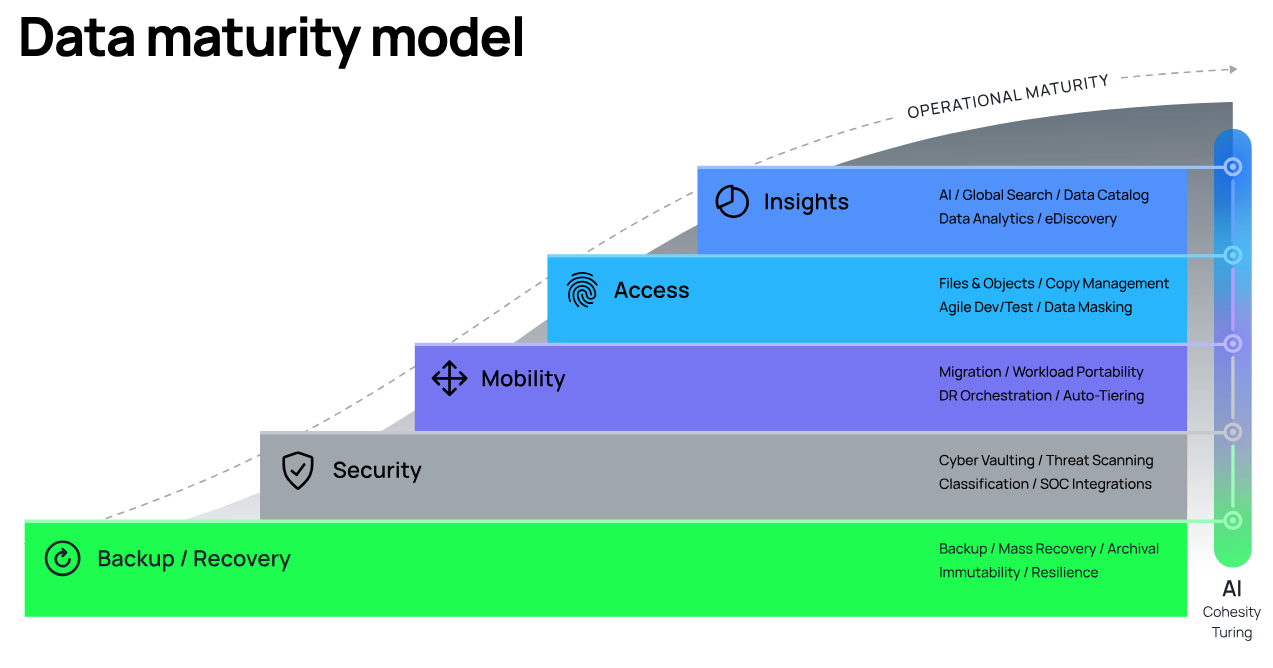There’s a huge shift occurring now in how organizations secure and manage data in the era of multicloud and ransomware.
The processes and products that your organization has used for the last decade are unlikely to support your requirements in the next decade. Why? Your data estate is managed by fragmented, single-purpose tools that tend to increase your attack surface while adding cost and complexity. Your status quo may have served you well historically. But the new world of cloud demands a different approach.
To account for massive amounts of data, and ever-evolving cyber threats, leading organizations are turning to modern data platforms that operate at cloud scale. These systems combine data security and management capabilities and support the wide range of data types common in large enterprises today.
To fully reduce operational risk, a transition to modern data security and management processes, tools, and practices is required.
So where to begin?
There’s a playbook for executives to use on the journey. Learn from your peers in this new Cohesity white paper: An executive’s guide to modern data security and management.
In this white paper, we examine these patterns and the role that IT leaders like you can play in making this modern model a reality.
Resilience: Your desired outcome
The best place to start on your journey: define success. Top organizations tend to define success based on resilience, an ability to recover from, or adjust easily to, a disruption.
We’ve seen three flavors of resilience used to achieve superior outcomes:
- Business resilience—The ability for the business to respond and adapt quickly to disruptions or significant changes that threaten operations, people, assets, brand, or reputation. The C-suite is usually responsible for this outcome.
- Cyber resilience—The ability to prepare for, respond to, and recover from cyberattacks—essentially, to withstand them. This is usually the role of an InfoSec or DevSecOps team.
- Data resilience—The ability to maintain the availability, integrity, and accessibility of data in the face of unexpected events, disruptions, or failures. Tasks such as backup and recovery and DR planning are part of a sound data resilience strategy. This is usually the role of an infrastructure team.
Strong business, cyber, and data resilience, though unique, share common benefits:
- Ensure continuity of operations, even in challenging circumstances
- Promote agility and innovation
- Build stakeholder confidence
- Drive regulatory and contractual compliance
- Reduce the cost of downtime
Each flavor of resilience has dozens, or hundreds, of KPIs that can be used to baseline your current environment, and measure your progress along the way. (The most foundational KPIs are discussed in the whitepaper.)
See what condition your condition is in
Modernization efforts must overcome challenges associated with people, processes, and tools. The most common challenges in this segment include:
- Incumbent systems manage many siloes of enterprise data
- Multiple clouds, with different APIs and security controls, are used by different teams in different ways
- Changing threat landscapes render reactive InfoSec strategies as ineffective
- Spending on public cloud services is hard to optimize
- Multiple unintegrated security controls
- Lack of collaboration between IT and cyber security tooling and workflows
The solution to many of these challenges: a modern data platform.
We’ve written about the characteristics of a modern platform in this space before. Scalability, simplicity, security, AI-readiness, and extensibility are the key items to guide your selection.
Of course, simply purchasing a proven product (based on, say, researching the top vendors in a recent Gartner Magic Quadrant) won’t help you achieve your resilience goals. You must adjust how your team secures and manages your data estate, including the adoption of APIs and automated workflows to help you improve your resilience and economic outcomes.
Plan your modernization journey with a data operating model
Given the complexity of the typical enterprise data estate, many IT leaders have turned to a data operating model to guide their modernization efforts.
A data operating model outlines how an organization manages, secures, shares, and uses data to achieve its goals. It defines processes, roles, technologies, and governance to ensure data quality, accessibility, and value, aligning data practices with business objectives.

The foundational layer of a data operating model is data protection. Strong backup and recovery capabilities will give you confidence in your organization’s ability to gracefully recover from unplanned disruptions.
Organizations should then move on to data security. Here, organizations integrate data resiliency systems with additional cyber resiliency capabilities and other existing security investments to further reduce risk from cyberattacks and other threats.
With these pillars in place, IT leaders can consider data mobility, data access, and ultimately data insights. These use cases help an organization share data safely and monitor and enforce responsible access to that data. Data insights refers to the use of advanced technologies to improve resiliency outcomes.
Get the entire whitepaper for a deeper review of each layer, including the key concepts and guidance on how to navigate each stage of maturity.
There’s never been a better time to start the journey
As with other modernization workstreams, you’re tasked with balancing agility, risk, and cost across your data estate. This estate is dynamic, and now encompasses data and apps running in on-premises data centers, public clouds, colocation facilities, and edge locations. Modernization efforts grow in scale and scope over time as the sheer volume of apps, data, and data sources compounds.
This journey may seem daunting. That’s why successful organizations establish resilience-centric outcomes and apply a maturity model to manage and benchmark their progress.
From here, we recommend these next steps:
- Establish your desired outcomes for data resilience.
- Develop a rough prioritization (e.g., a roadmap) of desired workloads and use cases for data resilience.
- Assess the ROI and TCO of a modern data platform with respect to your incumbent solution. Key points of comparison should be:
- Data protection efficiency
- Operational efficiency
- Risk and compliance
- Select your solution, based on product demonstrations, proven ROI and TCO calculations, and support for roadmap priorities.
- Deploy your chosen solution, and proceed to execute the roadmap from the prior step.
Once your modern platform is in place, generate an initial set of KPIs and regularly measure your progress against this baseline. From there, you will know when to advance to the next phase of your journey.

















